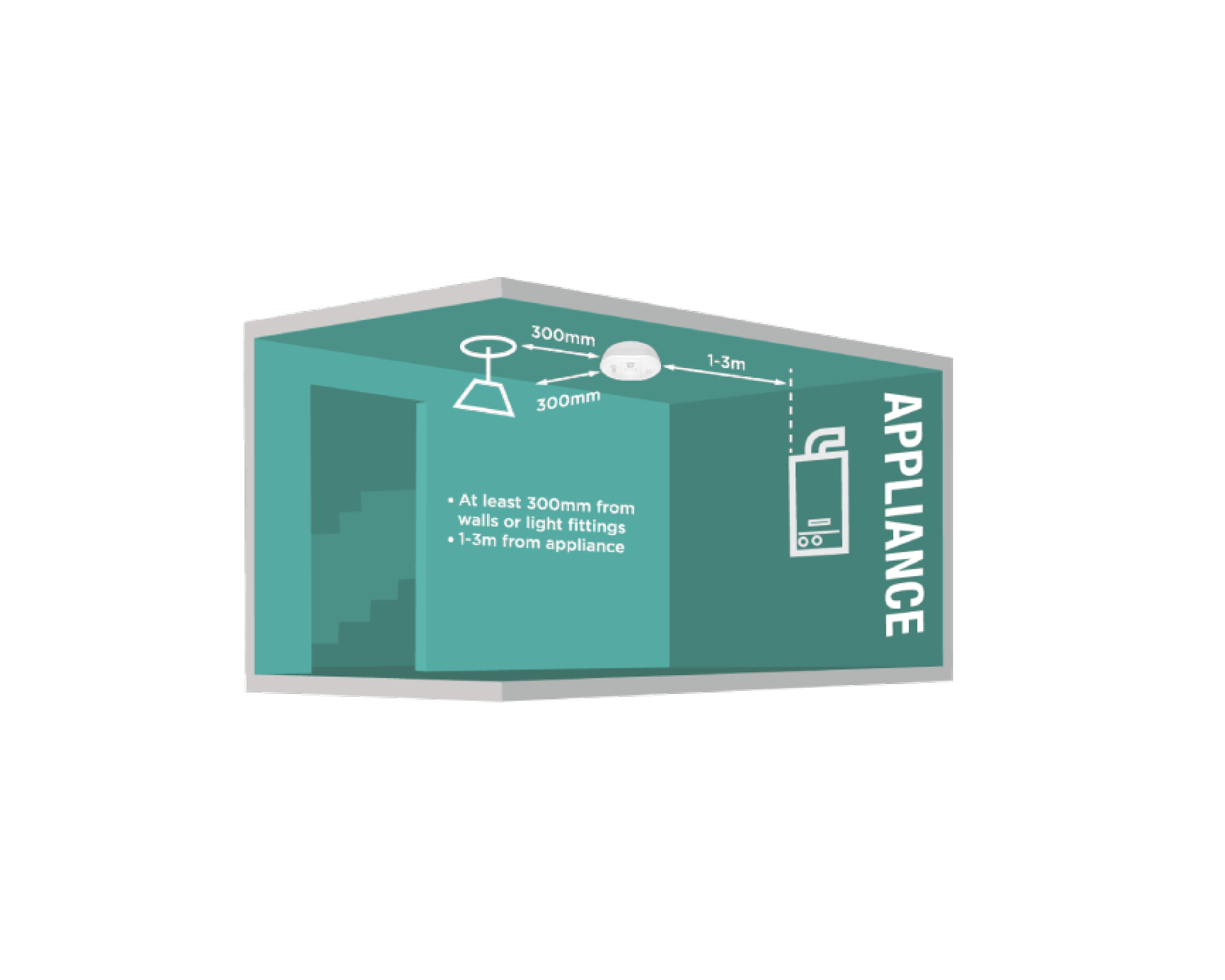Installing your Alarm
So, you’ve chosen the alarms you need, found your nearest stockist and now you need to install your alarm in the correct location to ensure it provides lifesaving detection and the quickest response to a Fire or Carbon Monoxide leak. Here’s a quick guide to alarm siting.

Smoke and Heat Alarms
- Alarms should be sited on the ceiling, as centrally as possible within the room/area they are installed.
- Site 300mm from walls, light fittings or any obstructions – this is to ensure that they are outside of any ‘dead air’ spaces that occur in corners and spaces where the airflow may be blocked.
- There should be an alarm within 3m of every bedroom door to ensure audibility.
- Alarms should be positioned between high-risk rooms and bedrooms.
- Alarms should not be sited within bathrooms or too close to a bathroom door as steam and moisture can affect them.

Other Factors to Consider:
Stairways:
- Site alarms on the flat ceilings at the top and bottom of the stairs – do not install on the sloped ceiling directly above the stairs.
Peaked and sloped ceilings:
- Smoke Alarms – site a maximum of 600mm vertically down from the apex
- Heat Alarms – a maximum of 150mm vertically down from the apex on the slope
Beams:
- Where the depth of the beam is less than 10% of the room height, install the alarm at a distance of twice the depth of the beam or 500mm, whichever is less.
- Where the depth of the beam is more than 10% of the room height – treat the beam as a wall and fit alarms on both sides of the beam, or if the beam is less than 600mm deep, install an alarm on the underside of the beam.

Carbon Monoxide Alarms
When installing Carbon Monoxide Alarms, it is important to note that there are different siting requirements depending upon if the alarm is being installed in the room with the fuel-burning appliance or not.
In a room with the fuel burning appliance:
- Alarms should be installed on the ceiling
- Should be fitted between 1m–3m from all potential sources of Carbon Monoxide
- Sited 300mm from walls, light fittings or any obstructions – this is to ensure that they are outside of any ‘dead air’ spaces that occur in corners and spaces where the airflow may be blocked
- If the fuel burning appliance is in a confined space for example, an enclosed cupboard (1m x 1m), then the alarm should be sited on the ceiling just outside the room.
In a room without a fuel burning appliance:
- Alarms should be sited at breathing height
- If installed within a bedroom, this could be at the height of the bedhead
If you would like more guidance on alarm installation, please get in touch with our expert Technical team – we are here to help by phone, email or live chat.

Find an Expert Installer
Aico Expert Installers have completed our dedicated training scheme to ensure they have all the information they need to correctly install domestic Fire and Carbon Monoxide Alarm Systems for the most effective protection.
We’re Here To Help
Our support team are on hand to help with your fire safety questions.





